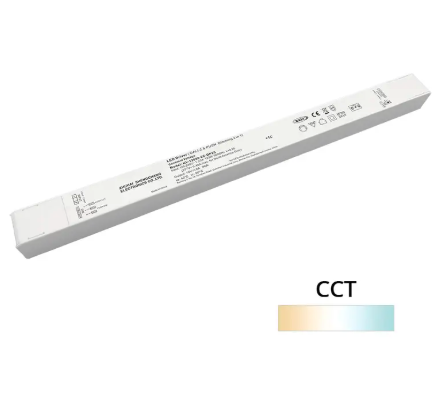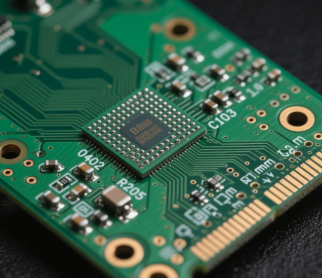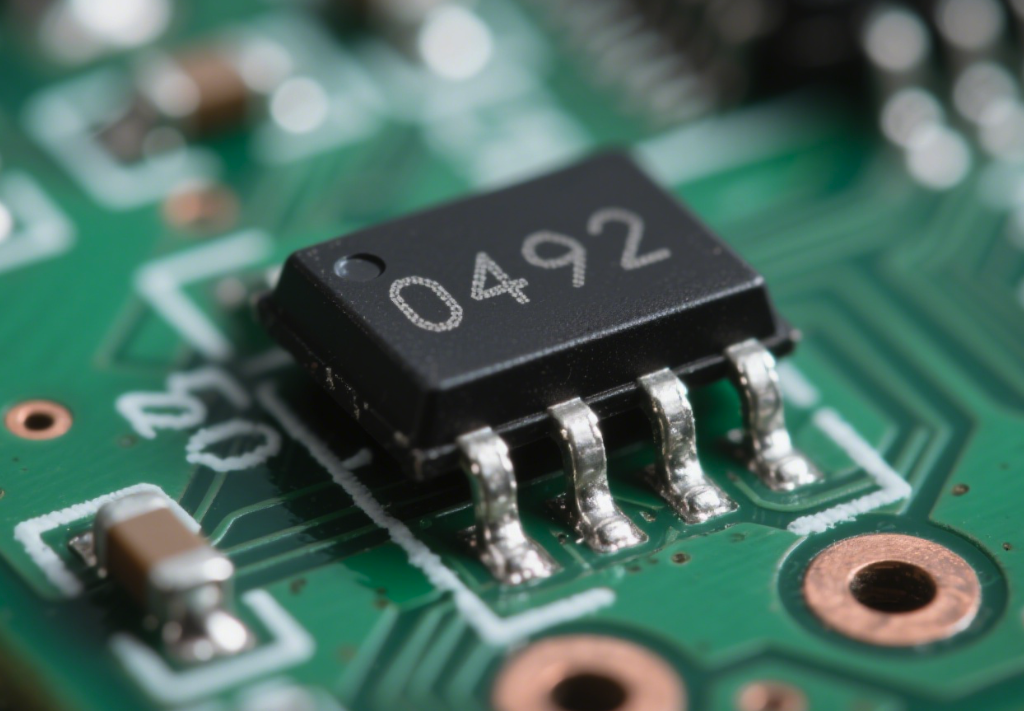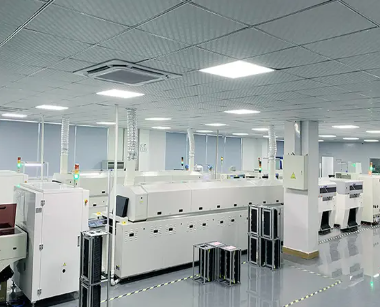LED technology has transformed the lighting industry, offering energy-efficient, long-lasting, and high-quality illumination for residential, commercial, and industrial applications. At the heart of every LED lighting system is the LED driver power supply, which ensures that LEDs operate at their optimal performance and extend their lifespan. This article delves into the essential components and functions of LED driver power supplies, providing practical insights for selecting the right driver and maintaining your LED lighting system.
What is an LED Driver Power Supply?
An LED driver power supply is a critical component that regulates the voltage and current supplied to LED lights. Unlike traditional incandescent bulbs, LEDs require precise power regulation to function efficiently and avoid damage from voltage and current fluctuations. The LED driver acts as the “heart” of an LED lamp, ensuring a stable and consistent power supply.
Differences Between LED Drivers and Traditional Transformers
Traditional transformers are designed to step up or step down voltage levels, but they do not provide the precise current regulation that LEDs need. LED drivers, on the other hand, are specifically engineered to deliver a constant current or voltage, depending on the LED requirements. This precision is crucial for maintaining the brightness and longevity of LEDs.

Key Functional Stages of an LED Driver
Input Stage
The input stage of an LED driver receives AC power from the mains supply, typically ranging from 120V to 277V. Fuses and EMI filters are essential components at this stage, protecting the driver from voltage spikes and stabilizing the input power.
Rectifier and Filter
The rectifier converts the AC input voltage to a DC voltage using diodes. Capacitors are then used to smooth out the pulsating DC voltage, ensuring a stable power supply for the subsequent stages.
Power Factor Correction (PFC)
Power Factor Correction (PFC) is a crucial stage in modern LED drivers. PFC improves the efficiency of the electrical system by ensuring that the power drawn from the mains supply is used effectively. This reduces energy losses and enhances overall system performance.
Switching Converter
The switching converter stage involves high-frequency transistors (such as MOSFETs or IGBTs) that generate a high-frequency AC signal. This signal is then transformed using transformers, inductors, and capacitors to regulate the output voltage and current.
Control Circuit
The control circuit relies on PWM (Pulse Width Modulation) controllers to adjust the output voltage or current. By changing the duty cycle, it keeps the output steady. Built-in feedback loops monitor the system and automatically compensate for any fluctuations in input voltage or changes in load.
Output Stage
The output stage ensures that the LEDs receive a consistent current. Output capacitors smooth out any remaining voltage or current fluctuations, providing a stable power supply to the LEDs.
Protection Circuits
Protection circuits are essential for preventing damage to the LEDs. Overcurrent, overvoltage, and thermal protection mechanisms ensure that the LEDs operate within safe limits, extending their lifespan.
Dimming Control (Optional)
Dimming control is an optional feature in some LED drivers, allowing for adjustable brightness levels. Dimming can be achieved through analog dimming, PWM dimming, or digital interfaces such as DALI. This feature enhances user experience and contributes to energy savings by reducing power consumption when full brightness is not required.
Components of an LED Driver Power Supply
Printed Circuit Board (PCB)
The PCB serves as the foundation for all electronic components, providing electrical interconnections and insulation. High-quality PCBs are made from durable materials and have precise soldering to ensure reliability and longevity.

Surface Mount Device (SMD) Components
SMD components are essential for modern LED drivers due to their compact size and high performance. These components include:
SMD Resistors: Provide precise resistance values, helping to control current flow.
SMD Capacitors: Ceramic monolithic capacitors are used for voltage smoothing.
SMD Diodes: Ensure unidirectional current flow, protecting the circuit from reverse voltage.
Integrated Circuits (ICs): Control voltage and current, providing essential protection functions.

Manual Insertion Components
Manual insertion components are larger and often require manual assembly. These include:
Switch Transformer: Steps down the voltage and provides isolation between the input and output.
Varistor: Protects against overvoltage spikes.
Electrolytic Capacitor: Stores energy and smooths the output voltage.
Inductor: Stores energy and filters the output current.
CBB Capacitor: Suppresses electromagnetic interference (EMI).
Fuse: Provides overcurrent protection.
FET: Regulates current flow based on voltage control.
Terminal: Serves as the interface for electrical connections.
How to Choose the Right LED Driver
Selecting the right LED driver is a crucial step in ensuring the optimal performance and longevity of your LED lighting system. The process involves several key considerations that can significantly impact the efficiency and reliability of your setup. Here’s a detailed guide to help you make an informed decision.
Determine Total LED Power and Voltage Requirements
The first step in choosing an LED driver is to accurately calculate the total power and voltage requirements of your LED system. This involves understanding the specifications of your LEDs, including their forward voltage (Vf) and forward current (If). By multiplying the forward voltage by the forward current, you can determine the power consumption of each LED. For example, if an LED has a forward voltage of 3.5V and a forward current of 0.35A, its power consumption is 1.225W (3.5V x 0.35A).
When dealing with multiple LEDs, especially in arrays or strips, you need to sum up the power requirements of all the LEDs to get the total power consumption. This total power will help you choose a driver that can supply the necessary power without overloading. Overloading a driver can lead to reduced performance, overheating, and premature failure. Therefore, it’s essential to select a driver with a power rating that matches or exceeds the total power requirements of your LED system.
Select Between Constant Current vs Constant Voltage Drivers
The type of LED driver you need depends on the specific requirements of your LED system. There are two primary types of LED drivers: constant current and constant voltage.
Constant Current Drivers: These drivers are designed to provide a steady and consistent current to the LEDs, regardless of changes in the load or voltage. They are ideal for high-power LEDs and arrays where maintaining a constant current is crucial for optimal performance. In applications such as industrial lighting, where multiple LEDs are connected in series or parallel, constant current drivers ensure that each LED receives the same amount of current, resulting in uniform brightness and efficient operation. By regulating the current, these drivers also help prevent thermal runaway, which is a common issue in high-power LED setups.
Constant Voltage Drivers: These drivers maintain a constant output voltage while allowing the current to vary based on the load. They are best suited for LED strips or fixed-voltage LEDs, where the voltage requirement remains constant. Decorative LED strips, for example, often require a constant voltage supply to ensure consistent brightness along the entire length of the strip. Constant voltage drivers are also commonly used in single-color LED applications, where the focus is on maintaining a stable voltage rather than regulating the current.
Understanding the specific needs of your LED system will help you choose the right type of driver. Always refer to the manufacturer’s specifications to determine whether your LEDs require a constant current or constant voltage supply.
Consider Environmental Factors
Environmental conditions play a significant role in the performance and lifespan of an LED driver. Factors such as temperature, humidity, and dust levels can affect the driver’s efficiency and reliability. Therefore, it’s essential to select a driver that is suitable for the specific environment in which it will be used.
Temperature: High temperatures can reduce the efficiency and lifespan of LED drivers. Drivers with built-in cooling mechanisms, such as heat sinks or fans, are essential for installations in high-temperature environments. Additionally, ensure that the driver is installed in a location with adequate ventilation to prevent overheating.
Humidity: Humidity can lead to corrosion and other issues that can affect the performance of the driver. For installations in damp or humid environments, select a driver with a suitable IP rating. IP ratings indicate the level of protection provided by the driver’s enclosure against dust, moisture, and other environmental factors. For example, an IP65-rated driver is protected against dust ingress and low-pressure water jets, making it suitable for outdoor applications.
Dust Levels: Dust can accumulate on the driver’s components, leading to reduced performance and potential damage. Drivers with higher IP ratings offer better protection against dust ingress, ensuring reliable operation in dusty environments.

Frequently Asked Questions
Can LEDs work directly on AC power?
Most LEDs are designed to operate on DC power and require a driver to convert AC power to DC. Direct AC operation can cause flickering and reduced performance.
How many LEDs can a driver support?
The number of LEDs a driver can support depends on the driver’s power rating and the power requirements of the LEDs. Always ensure the driver’s capacity matches the total power of the LEDs.
What is an LED driver IC and its role?
An LED driver IC is an integrated circuit that controls the voltage and current supplied to the LEDs. It provides essential protection functions and ensures stable operation.
Conclusion
LED driver power supplies are essential for maintaining the performance, efficiency, and longevity of LED lighting systems. Understanding the components and functions of LED drivers helps in selecting the right driver for your specific needs. By choosing high-quality drivers and following proper installation and maintenance practices, you can ensure long-lasting, efficient lighting solutions. For reliable and advanced LED driver solutions, consider products from leading manufacturers such as Zhuhai Shengchang Electronics Co., Ltd., which offer a wide range of options tailored to various applications.


















